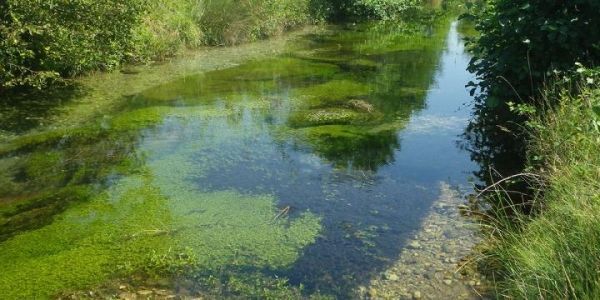'Water plants are a nuisance in streams, blocking the flow. You should remove them'. This notion has for many years determined how streams were managed to prevent flooding during high rainfall events. Research by NIOZ scientist Loreta Cornacchia, published in the journal Proceedings of the Royal Society B, in cooperation with Utrecht University and British and Belgian partners, shows how vegetation in streams can actually buffer water levels, by adjusting vegetation cover. By adapting the patterning of plant clumps to changes in discharge, river plants can both counter flooding as well as prevent drying out, thereby protecting biodiversity. Cornacchia: ‘They provide a natural buffer against hydrological changes.’
Huge implications for water management
‘The implications for water management are huge’, says Cornacchia. The current strategy of plant removal does not only threaten a naturally balanced water level, it also threatens a stream’s biodiversity. Inland waters are freshwater hotspots for biodiversity and vegetation is its guardian. It provides habitats and food for invertebrate and fish, helps stabilize the river banks, and removes excess nutrients from the water.
Biology not physical forcing determines water flow
Surprisingly, during extensive empirical research and sampling at two stream sites in the United Kingdom, the researchers observed that plant cover adjustments led to a more constant water level and flow regime. Cornacchia: ‘We actually observed that the plants determined the water flow, rather than the other way around. In this way, submerged aquatic vegetation in rivers ensures that organisms that depend on the aquatic environment to persist can remain in the stream year-round.’
Read more at Royal Netherlands Institute for Sea Research
Image: Inland waters are freshwater hotspots for biodiversity. Occupying just one percent of the planet's surface, they are home to ten percent of all species. (Credit: Loreta Cornacchia)


